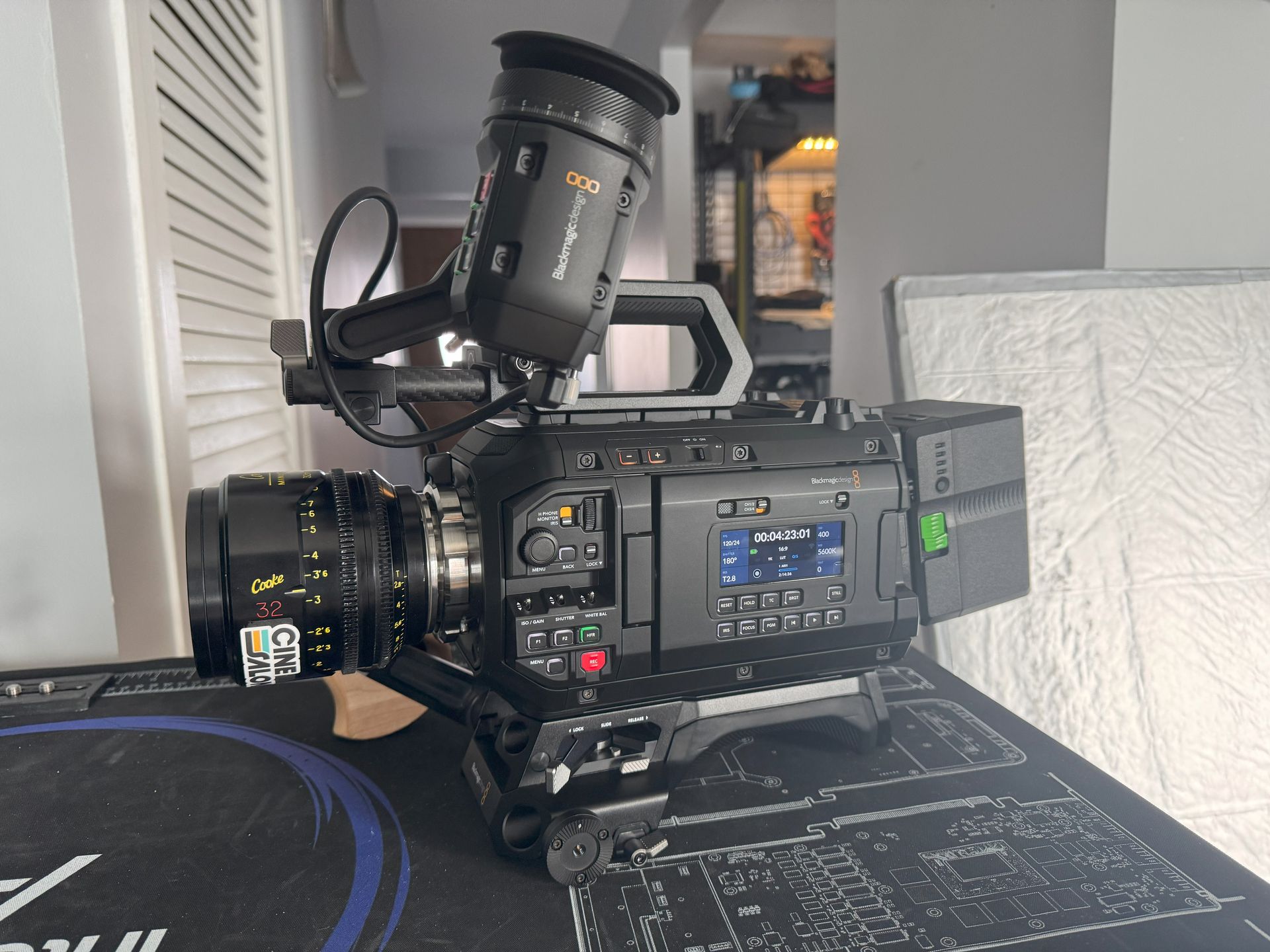A concise comparison of the top two
video-sharing platforms.
YouTube and Vimeo hold the distinction of being two of the most renowned platforms in the digital realm.
YouTube, being the undisputed leader, takes the crown as the world's largest video-sharing platform with an impressive user base of 2.68 billion active users. This colossal platform is under the ownership of Google and offers a vast array of video content, ranging from captivating music videos to enticing movie trailers. Notably, YouTube boasts a powerful search engine that simplifies the process of finding specific videos, ensuring a seamless user experience.
On the other hand, we have Vimeo, a slightly smaller video-sharing platform that prides itself on delivering high-quality video content. Its strength lies in its thriving community of professional filmmakers and videographers, who utilize the platform as a showcase for their outstanding work. With its reputation for excellence, Vimeo offers a range of advanced video tools and customization options that surpass those of YouTube, allowing creators to elevate their content to new heights. In the world of video platforms, YouTube and Vimeo stand tall as the giants competing for dominance.
When it comes to making your mark in the digital landscape, YouTube and Vimeo are the heavyweight contenders vying for your attention. Each platform has its own unique appeal, catering to different preferences and needs.
Whether you seek the vastness and versatility of YouTube or the artistic excellence and sophisticated tools of Vimeo, these platforms offer a captivating digital experience. The choice between YouTube and Vimeo marks a significant decision when it comes to exploring the world of online videos.
Technical Advantages/Disadvantages
When it comes to choosing a video platform, both YouTube and Vimeo offer unique technical advantages and disadvantages to consider. Here are some key points to help you make an informed decision:
Advantages of YouTube:
- Boasts a massive user base, with billions of monthly active users.
- Leverages powerful search and recommendation algorithms to expand the reach of your videos.
- Supports high-quality video formats, including 4K and 360-degree videos.
- Provides a suite of creator tools, such as analytics and monetization options.
- Offers live streaming and community features for direct engagement with your viewers.
Disadvantages of YouTube:
- Standing out in a crowded marketplace can be challenging
- Strict content restrictions and copyright policies may lead to demonetization or video removal.
- Advertisements can potentially disrupt the viewing experience for some users.
Advantages of Vimeo:
- Focuses on high-quality, professional-grade content.
- Grants greater control over video privacy and security options.
- Provides advanced video editing features and customizable branding options.
- Cultivates an engaged and supportive user community.
- Better accommodates long-form videos, including feature-length films and documentaries.
Disadvantages of Vimeo:
- Smaller user base compared to YouTube.
- Less powerful search and recommendation algorithms, which may limit audience reach.
- Limited monetization options, making it more challenging to earn revenue from your videos.
- Live streaming capabilities are not as robust as those of YouTube.
Ultimately, the choice between YouTube and Vimeo hinges on your specific needs and goals as a content creator. Consider these factors carefully to determine which platform aligns best with your objectives.
Video Quality and Resolution
Both YouTube and Vimeo excel in supporting high-quality video content, but Vimeo has a slight advantage when it comes to video quality and resolution.
YouTube boasts the highest video resolution of 4K, which equals 3840x2160 pixels. It also supports HDR (high dynamic range) video and 360-degree videos. However, YouTube applies significant compression to its videos to enhance playback speed and reduce data usage, which can result in a compromise on image quality.
On the other hand, Vimeo allows for superior video uploads with less compression, ensuring better image quality. Vimeo supports resolutions up to an impressive 8K, equaling 7680x4320 pixels. Additionally, Vimeo offers a variety of video codecs and settings, giving users more flexibility. It empowers users to customize their videos to their liking, prioritizing video quality and resolution. Vimeo takes a quality-centric approach, valuing excellence over quantity.
Content Restrictions and Copyright Policies
When it comes to content creation, YouTube and Vimeo have specific guidelines that you need to follow. These guidelines ensure that your uploaded videos align with their standards and community guidelines. Here's what you need to know:
On YouTube, it's crucial to adhere to strict content guidelines. This means refraining from uploading videos that contain harmful or dangerous content, graphic violence, or nudity. It's your responsibility to ensure that the content you upload does not infringe on any copyrights.
Similarly, Vimeo has its own set of guidelines and a dedicated team that reviews content to ensure compliance. They provide various tools to help protect your intellectual property. For instance, you can add watermarks to your videos and control whether or not people can embed them.
When it comes to copyright policies, both YouTube and Vimeo have systems in place to detect copyrighted material. They also have processes for submitting copyright claims and counterclaims, ensuring that intellectual property rights are respected.
Both platforms prioritize content restrictions and copyright policies to safeguard their intellectual property and maintain a respectful community. It is essential to carefully read and follow their guidelines when creating and uploading content to ensure a positive and compliant experience.
Live Streaming Capabilities
Let's delve into the key differences between YouTube and Vimeo when it comes to live streaming.
Here's what you need to know:
YouTube:
- YouTube provides live streaming capabilities for both desktop and mobile devices, giving you flexibility in reaching your audience.
- You can schedule your live streams in advance on YouTube and promote them to generate anticipation and interest.
- With YouTube, you can take advantage of multiple camera angles and engage with viewers through live chat features.
- Real-time analytics during your live streams allow you to gather valuable insights on viewership and engagement.
- YouTube's vast user base offers the potential for a larger audience, increasing the visibility of your live streams.
Vimeo:
- Vimeo offers live streaming capabilities exclusively for desktop, focusing on providing a reliable streaming experience.
- You have the option to embed your live stream on your website or share it across your social media channels, expanding your reach.
- Vimeo allows for custom branding options, enabling you to personalize your live stream player to align with your brand identity.
- After the live stream concludes, Vimeo provides access to analytics and viewer data, allowing you to analyze performance and gather valuable insights.
- Vimeo is renowned for its emphasis on high-quality, professional-grade live streaming, making it a preferred choice for businesses and organizations.
Monetization and Advertising Options
Let's talk about how you can make money from your videos on YouTube and Vimeo.
It's important to explore these features and understand your choices to make informed decisions that align with your goals and audience. Both platforms provide opportunities to make money from your videos through monetization and ads, so choose the options that best suit your needs.
YouTube:
YouTube allows you to monetize your videos by enabling ads to appear on them. YouTube takes care of setting up the ads, and you earn a share of the revenue generated from those ads.
To be eligible for monetization on YouTube, you need to meet certain requirements. You must have at least 1,000 subscribers and accumulate 4,000 hours of watch time within the past year.
Vimeo:
Vimeo offers various monetization options for your videos. You can choose to sell or rent your videos to viewers, providing them with access for a fee.
Additionally, Vimeo has a "tip jar" feature that allows viewers to donate money to support your work directly.
Vimeo's On Demand program allows you to sell your videos to a broader audience and retain 90% of the revenue generated.
Pricing and Subscription Models
Let's break down the pricing and subscription options for YouTube and Vimeo.
YouTube:
YouTube is a free platform where users can upload, watch, and engage with videos. However, there are additional paid features available for creators who want to enhance their channels.
These include:
- YouTube Premium: For $11.99 per month, you get access to exclusive content and enjoy an ad-free viewing experience.
- YouTube Music Premium: This subscription service costs $9.99 per month and offers ad-free music streaming, offline playback, and background play.
- YouTube TV: Priced at $64.99 per month, YouTube TV provides access to over 85 channels, including live sports and news.
- Channel Memberships: Creators can offer paid channel memberships to their viewers, granting access to exclusive content and benefits. Creators can set their own membership prices and retain 70% of the revenue.
Vimeo:
Vimeo offers both free and paid plans with various features for creators. Let's take a look at the different pricing tiers:
- Vimeo Basic: This free plan includes 500MB of weekly upload space, basic video analytics, and limited privacy settings.
- Vimeo Plus: For $7 per month, you get 5GB of weekly upload space, advanced video analytics, and more privacy settings.
- Vimeo Pro: Priced at $20 per month, this plan offers 20GB of weekly upload space and provides advanced customization options and priority support.
- Vimeo Business: For $50 per month, Vimeo Business offers 5TB of total storage, live streaming capabilities, and features for team collaboration.
- Vimeo Premium: The premium plan costs $75 per month and provides 7TB of total storage. It offers advanced marketing tools, in-depth analytics, and extensive customization options.
In summary, Vimeo's subscription models cater more towards professional creators and businesses, while YouTube offers a wider range of possibilities for both creators and viewers. Your choice between YouTube and Vimeo will depend on your specific needs, target audience, and goals.
Market Share and User Base
YouTube holds a larger market share and boasts a larger user base compared to Vimeo. As of 2023, YouTube had a whopping 2.68 billion monthly active users, while Vimeo had around 170 million members. This means that YouTube enjoys a much wider reach and has a larger audience base to tap into.
The extensive user base of YouTube also translates to a greater variety of content available on the platform. YouTube's clever algorithms make it easier for users to discover new content that aligns with their interests, ensuring a diverse range of videos to explore.
On the other hand, Vimeo caters more specifically to professionals seeking a platform to showcase their creative work. It offers a suite of advanced features, such as customizable video players and the ability to sell videos. While Vimeo may have a smaller selection of content overall, it places a strong emphasis on quality over quantity, prioritizing videos that excel in production value and artistic merit.
Despite having a smaller user base and market share in comparison to YouTube, Vimeo appeals to a distinct audience and provides unique features that resonate with creative individuals. It serves as a niche platform for those seeking a more refined and professional video-sharing experience.
Customization and Branding
Both YouTube and Vimeo provide creators with the ability to customize and brand their videos, allowing for a unique and recognizable identity. On YouTube, you can personalize your channel by uploading a profile picture and banner image. You also have the option to include links to your social media accounts and customize the colors of your channel to match your brand's aesthetic.
Similarly, Vimeo offers a range of customization options to enhance your channel's appearance. You can create custom video players that feature your logos and branding elements. Additionally, you have the freedom to customize your channel with a banner, description, and links to your social media accounts. Both platforms also allow you to add watermarks to your videos, enabling you to promote your brand effectively.
Whether you choose YouTube or Vimeo, leveraging these customization and branding features is crucial in establishing a distinct presence and attracting viewers to your channel. By utilizing these options, you can make your videos and channel stand out from the competition and leave a lasting impression on your audience.
Analytics and Insights
YouTube and Vimeo equip creators with valuable analytics and insights to gain a deep understanding of how their videos and channels are performing. These insights enable creators to make informed decisions about their content strategy.
On YouTube, you can access a range of analytics, such as views, watch time, audience demographics, and engagement metrics. The platform also offers a real-time dashboard that provides immediate feedback on how your videos are performing while they are being watched.
Vimeo also offers analytics to creators, including video views, engagement data, and audience demographics. Additionally, Vimeo provides engagement graphs that visually represent how viewers interact with your videos.
Both platforms allow you to track revenue generated from monetized videos, which helps optimize your content strategy and revenue generation. Furthermore, YouTube and Vimeo offer convenient options for watching and uploading videos on the go, catering to creators who prefer a mobile workflow.
By utilizing these analytics and insights, both on YouTube and Vimeo, creators can gain valuable insights into their audience's preferences and behaviors. This information enables them to refine their content, improve audience engagement, and make data-driven decisions to enhance their channel's performance and growth.
Audience Reach and Engagement
YouTube boasts a vast user base with billions of active users each month, giving your videos a greater chance of reaching a larger audience. Their search and recommendation algorithms are powerful tools that help increase the visibility of videos.
In contrast, Vimeo attracts a more focused audience that appreciates creative and high-quality content. Many professionals in fields like film and video production prefer to showcase their work on Vimeo. While the potential audience size may be smaller compared to YouTube, the viewers on Vimeo tend to be more targeted and engaged.
One significant difference between YouTube and Vimeo lies in the size of their user bases. Both platforms offer features for engaging with your audience, such as commenting and messaging. YouTube takes it a step further with live streaming and community features, facilitating more direct interaction with your viewers.
YouTube and Vimeo offer unique opportunities to connect with audiences, each with its own audience size and focus. Understanding your target audience and the platform that aligns best with your goals is key to effectively reach and engage with your viewers.
Mobile App Experience
In today's digital era, mobile devices have become a popular way to access video content. Both YouTube and Vimeo offer mobile apps that enable users to watch videos on their phones.
YouTube's mobile app is widely used and has over 2 billion monthly active users. It is available on Android platforms and provides a user-friendly interface for browsing and watching videos. The app also offers convenient features like offline playback and picture-in-picture mode, allowing users to enjoy videos even without an internet connection.
Vimeo also has a mobile app available on both iOS and Android platforms, although its user base is smaller compared to YouTube. However, Vimeo's mobile app is well-designed and delivers a seamless user experience. It includes features like offline playback, allowing users to download videos for offline viewing.
One advantage of Vimeo's mobile app is its ability to upload and edit videos directly from mobile devices. This feature can be beneficial for creators who want to upload and make edits to their videos while on the go.
While YouTube has a larger user base and offers a broader range of features, Vimeo's app is well-crafted and provides convenient options for quick video uploads and edits. When deciding between YouTube and Vimeo, content creators should consider their target audience and their video production workflow to make the best choice.
Conclusion
When deciding between YouTube and Vimeo, there isn't a single solution that fits everyone. Each platform has its own pros and cons, and the best choice for you depends on your unique requirements and objectives as a content creator.
YouTube is a well-established platform with a wide audience and plenty of advertising opportunities. If you prioritize reaching a larger audience and exploring diverse advertising options, YouTube might be the way to go. On the other hand, if you value customization features and prefer a more supportive community, Vimeo could be a better match. Vimeo allows for greater personalization and offers a community that may be more aligned with your creative aspirations.
Ultimately, the key is to create content that you are passionate about and that resonates with your audience, regardless of the platform you choose. Consider your specific needs and goals as a content creator to make an informed decision between YouTube and Vimeo.


Get total clarity on your video marketing and paid media with our FREE comprehensive data audit.







